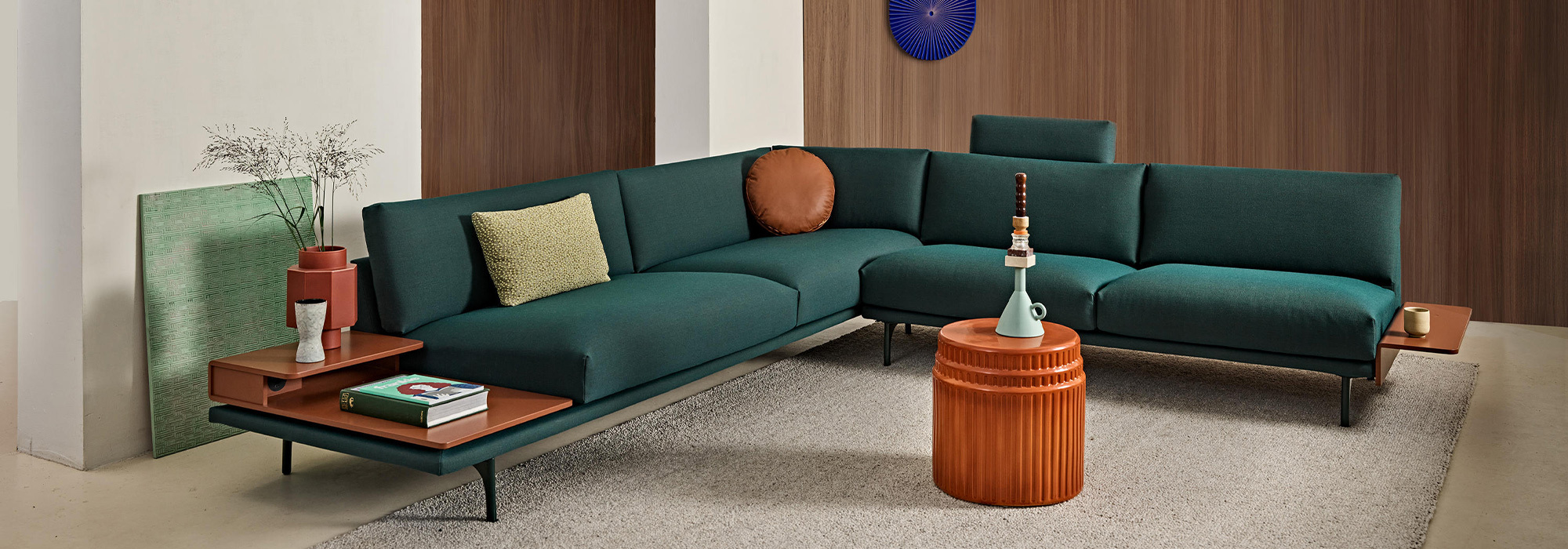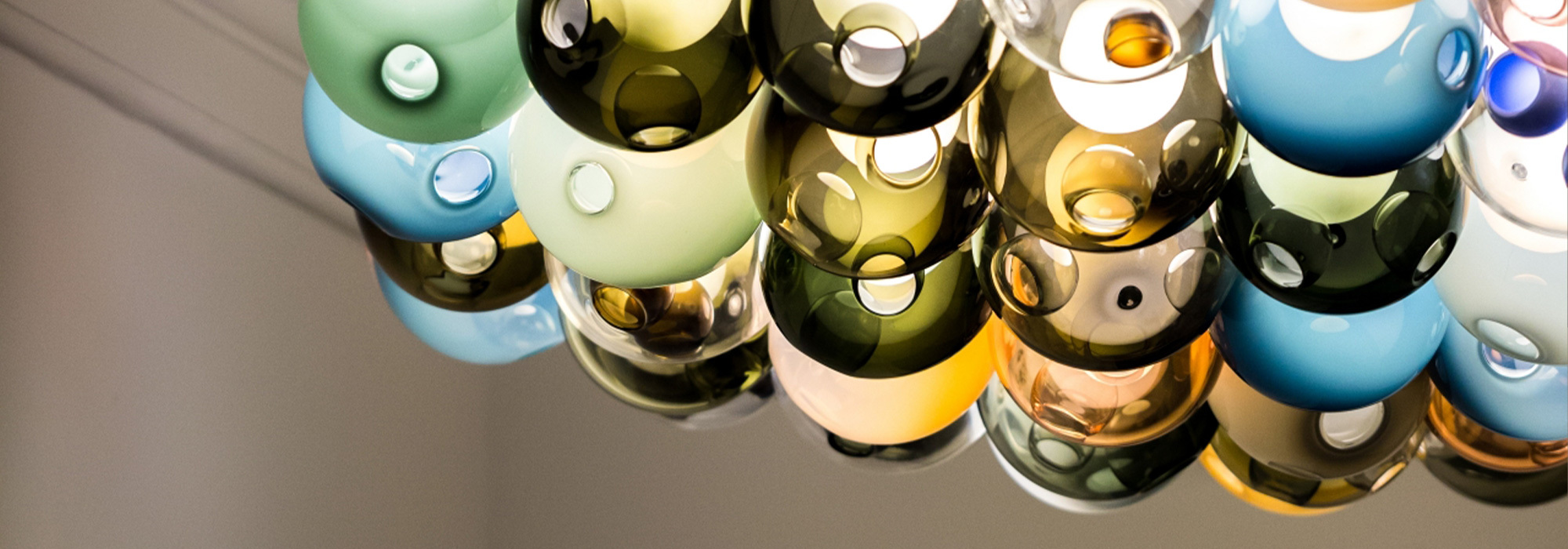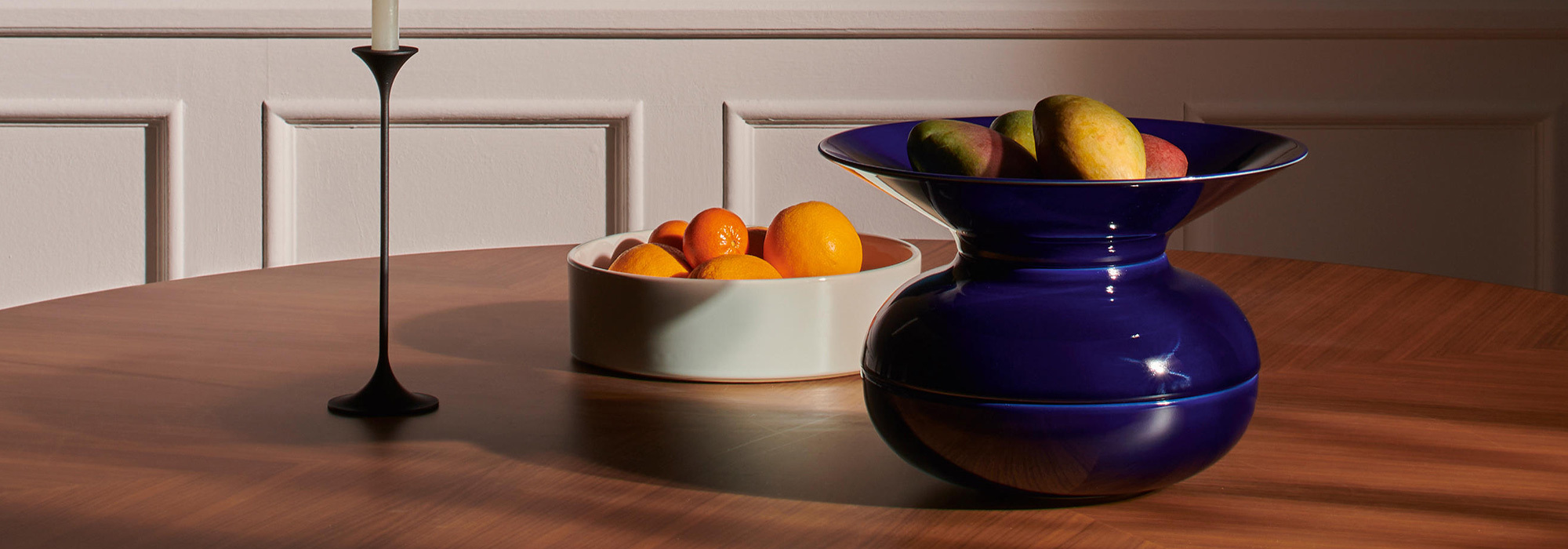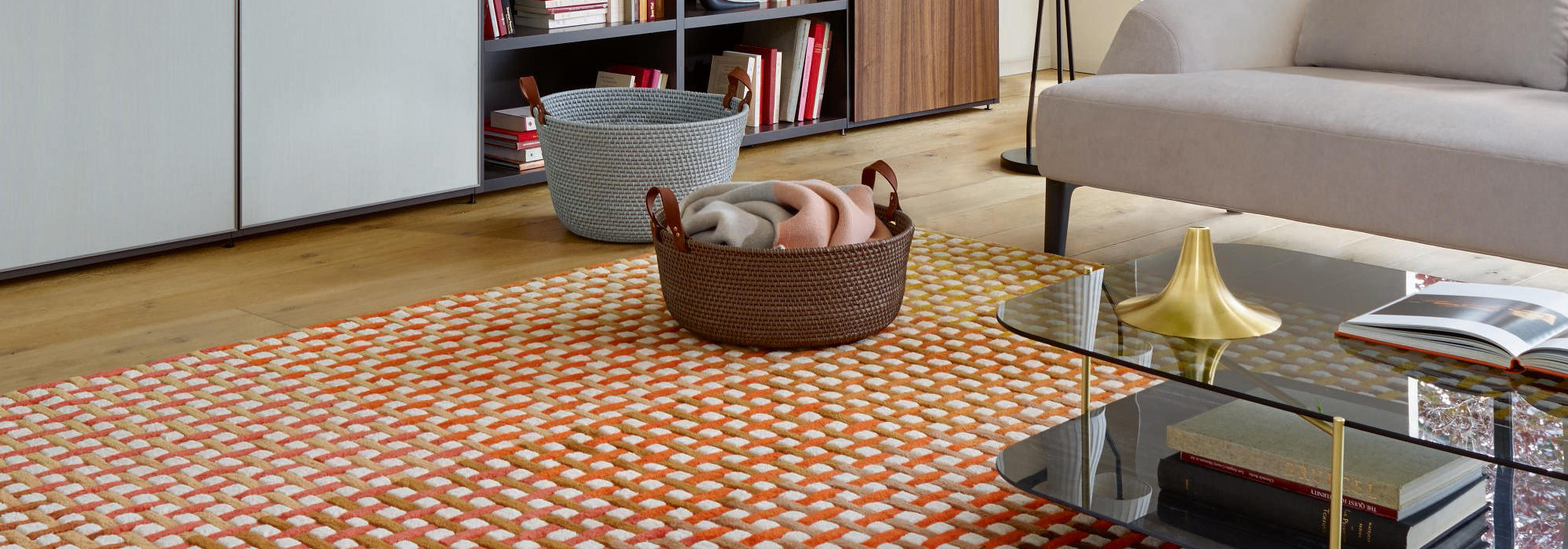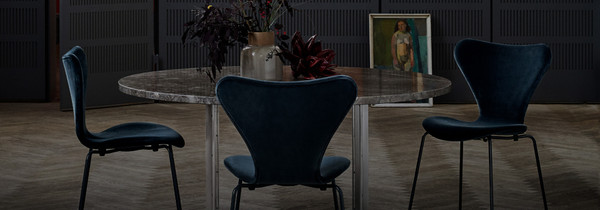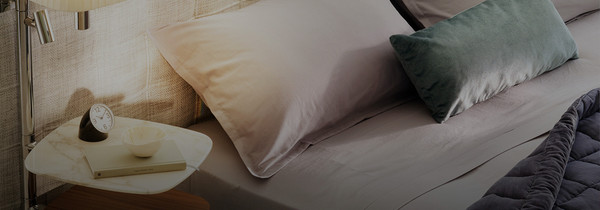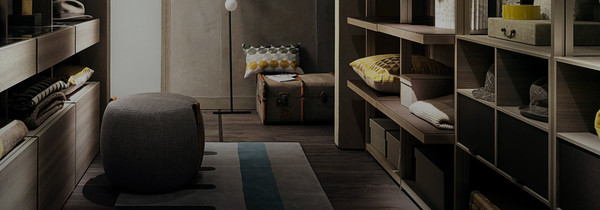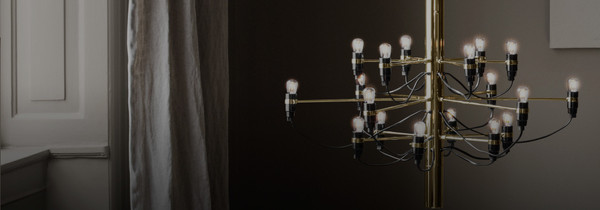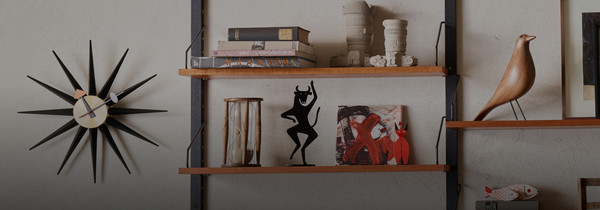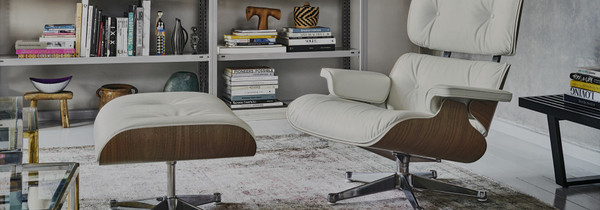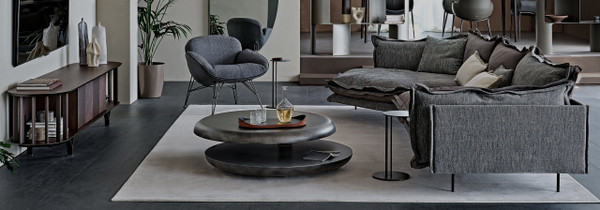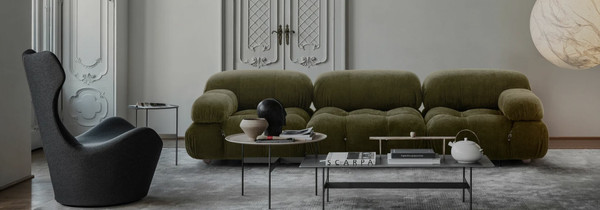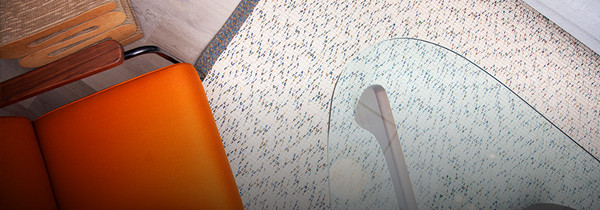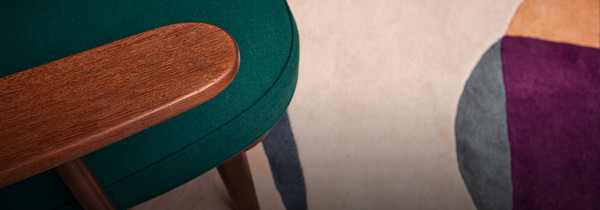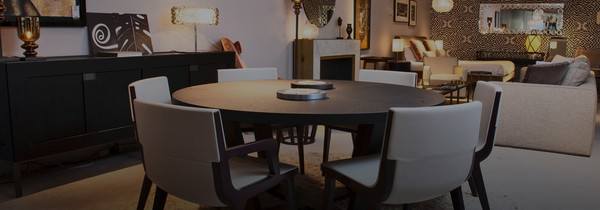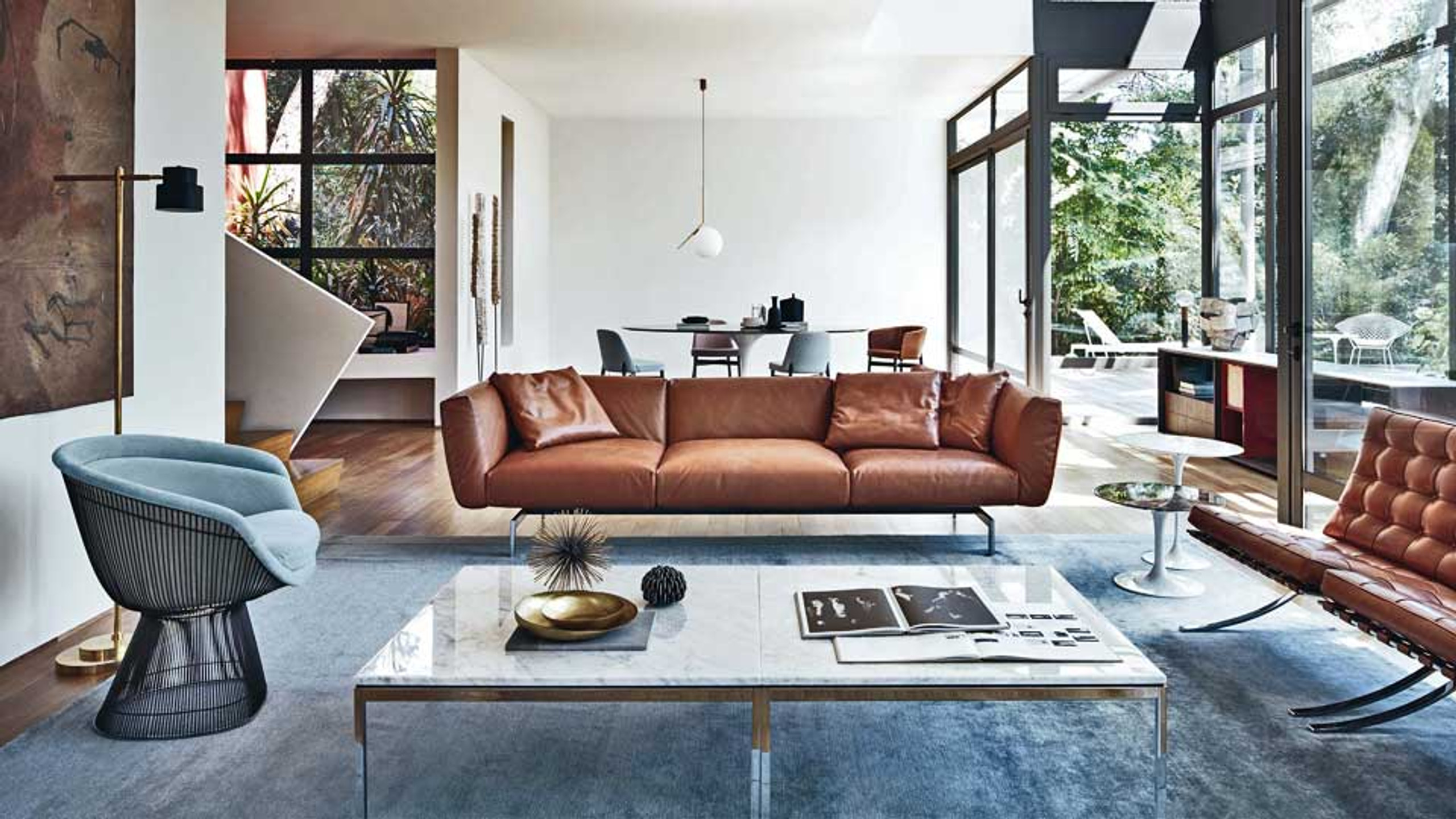
Brand Focus: Discover the Wonderful History of Knoll
It is said that we should look to surround ourselves with things that will last forever. It’s a powerful statement in an era of fast fashion, and yet plenty of the world’s most recognizable designs have already proven to be immortal. To achieve such status requires a revolutionary approach, a new kind of plan for the house and modern living. In the early 1940s, this artistic attitude emerged in the form of Hans and Florence Knoll. Together, they would create some of the most iconic modern furniture of all time, formulating a collection that would become an essential ingredient in any contemporary home. In doing so, they brought modernism to America, while simultaneously reprogramming global associations of luxury living. But what was the secret behind their phenomenal success? And why is Knoll furniture still so significant today?
Knoll was established in 1938, amid the echoes of World War by its eponymous founder, Hans Knoll. Having fled the repression of Nazi Germany, Knoll arrived in the US with the singular desire to cultivate a very pure kind of household design. His vision was indebted to the core tenets of the Bauhaus movement he had left behind, an ideology that sought to unite the fields of architecture and industrial design through technological innovation, clean lines and the use of “honest materials”.
Knoll understood that modern furniture could assert an important presence artistically and politically, favouring the soft power of sculptural, well-crafted pieces. Upon partnering with Florence Shust in 1943, they began to establish a design culture that strived to elevate every object in the room to its full potential, bringing order and beauty to life and work. The design duo would eventually marry and the company would benefit greatly from Florence Knoll’s network of design connections and insightful leadership acquired during her tenure at Cranbook Academy of Arts.
Knoll’s philosophy and phenomenal success are best understood through five of its defining collections.
Please Be Seated
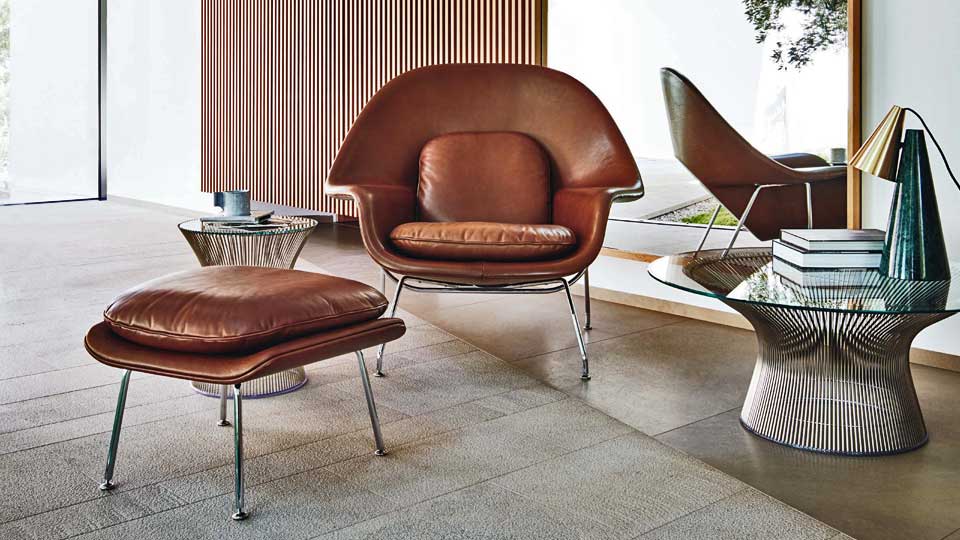
The much-coveted Womb Chair was designed by Eero Saarinen and released in 1948. His brief from Florence Knoll was to create a modern armchair that felt “like a basket full of pillows, something I would love to curl up in”. As a formally trained architect, Saarinen understood that true comfort could only be achieved if every aspect of the chair, especially the frame, was designed to support the human body. Prototype after prototype emerged, but it wasn’t until he began experimenting with a fibreglass shell that his iconic silhouette came to fruition.
A deep, high backed armchair with gently flared armrests emerged, appearing to float effortlessly upon thin wire struts. We can see elements of this design principle in Gubi’s now iconic Beetle Chair, although, at the time, there was no textbook for Saarinen’s experimentation. His materials were avant-garde, used in shipping engineering rather than designer furniture, and stood in stark contrast to the stuffy armchairs of the time.
The Womb Chair would go on to become a household name, gracing the cover of magazines like the New Yorker and Saturday Evening Post, even appearing in the much anticipated Coca-Cola Christmas ad in 1958. It became a landmark of casual living, at once the refuge of the chain-smoking suburban dad and the elegantly coiffured 1950s housewife. Capable of supporting the body in a variety of positions, the aptly named Womb Chair revolutionized our approach to relaxation. Considered one of the finest contemporary armchairs of all time, it was with great anticipation that Knoll released the Womb Sofa, a delicate cocoon capable of delivering the same intimate comfort, only this time for two.
International Style
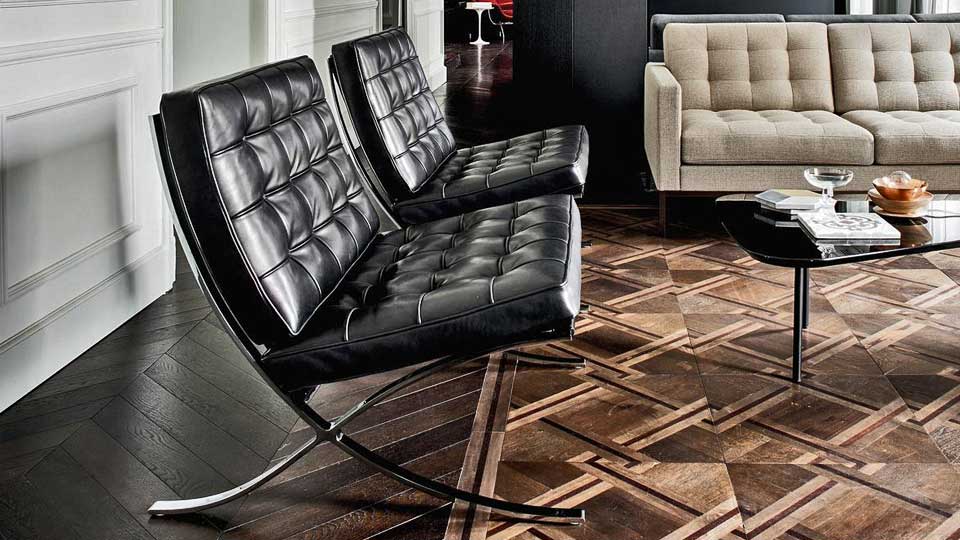
Originally designed for the Spanish royal family, Knoll’s Barcelona Lounge Chair was a crucial component in establishing what came to be known as the “International Style”. All smooth chrome and sumptuous leather, the new look coalesced architectural vogues and elements into modern furniture. Industrial materials were hand polished to gain new luminosity and left to shine in a style that preferred quality craftsmanship over superfluous decoration.
Much like the buildings they came to epitomize, Ludwig Mies Van Der Rohe’s modern lounge chair would only improve with time, each of the 40 hand welted leather squares ageing gracefully in the way that only the finest leather can.
Its status as a hallmark of excellent taste means that Knoll’s Barcelona Series can be glimpsed in the background of movies of all genres, from Batman’s Gotham haunt through to the smoky offices of the 1960s TV Show Mad Men.
Down To The Wire
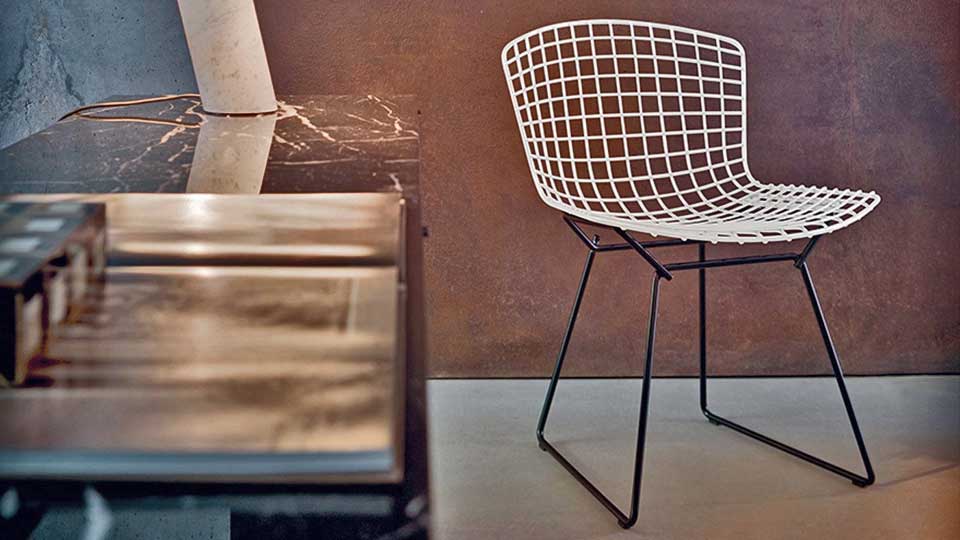
The wild success of Knoll furniture was essential to the codification of the American design abroad. At once pure, hard working and modern, their contemporary furniture was, in many ways, a physical manifestation of the American dream, and a crucial component in America’s self-fashioning. The eponymous Bertoia Dining Chair exemplifies this aspect. A delicate yet sturdy modern chair, Bertoia’s appeal is located in its polished wire frame. Its lightweight profile managed to convey a new form of understated luxury, transforming a formerly industrial material into a timeless work of art.
This contemporary dining chair would encapsulate one of fellow modernist’s, Jean Le Corbusier’s, most widely quoted aphorisms: “to be modern is not a fashion – but a state”. In trusting the strength of sculptural forms and honest materials, Harry Bertoia created an archetypal dining chair that could be clearly appreciated in any locale.
In Good Company
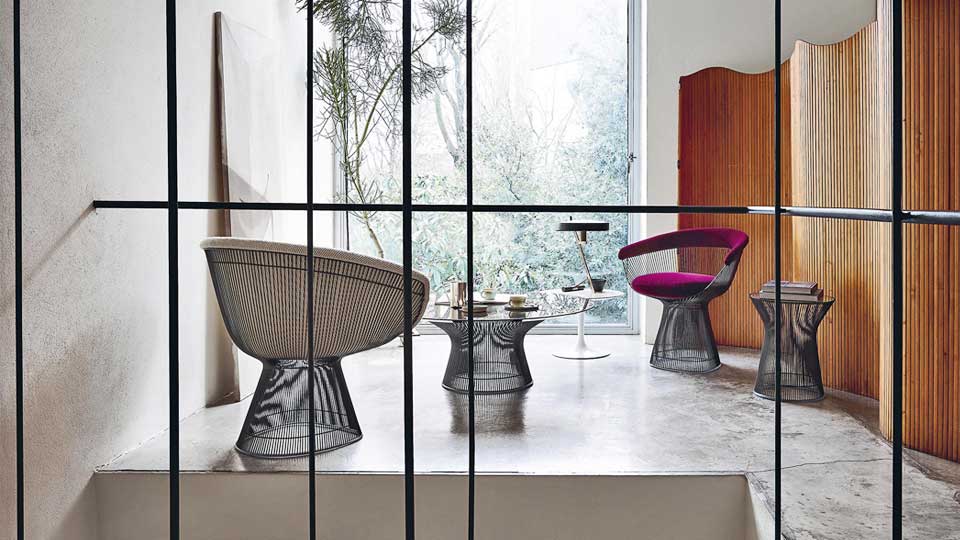
Much can be said for the Knolls open spirit of collaboration. Both Hans and Florence Knoll gave their artists the creative freedom to express new and innovative design concepts, without the constraints of a strict design agenda. In carefully fostering a thriving design culture, Knoll was established as a hub of innovation to rival that of some of the oldest Italian furniture manufacturers.
One of their most successful collaborations came about in 1960s, with Warren Platner’s iconic collection. When asked to explain the concept behind the Platner Lounge Chair he said: “Why separate support from the object. Just make it all one thing that starts on the floor and comes up and envelops me, supports me.”
Curved metallic pipes found new sensuality in the sculptural bases and plush upholstery of this shapely lounge chair. Glamorous without being ostentatious, the Platner Series combined a full-bodied seat with a visually light base, juxtaposing two aesthetics with phenomenal results.
Another component of Knoll’s success can be accredited to the fact that although mass-produced, each item of contemporary furniture is imbued with the aura of hand production. In the case of the Platner Lounge Chair, hundreds of rods and thousands of welds are necessary to create the intricate cylindrical steel base.
The collection includes a glamorous stool, side table, several lounge chairs a stylish coffee and dining table. Available in a variety of finishes, each piece is upholstered in the bright colours of their trademark textile line.
Put On A Pedestal
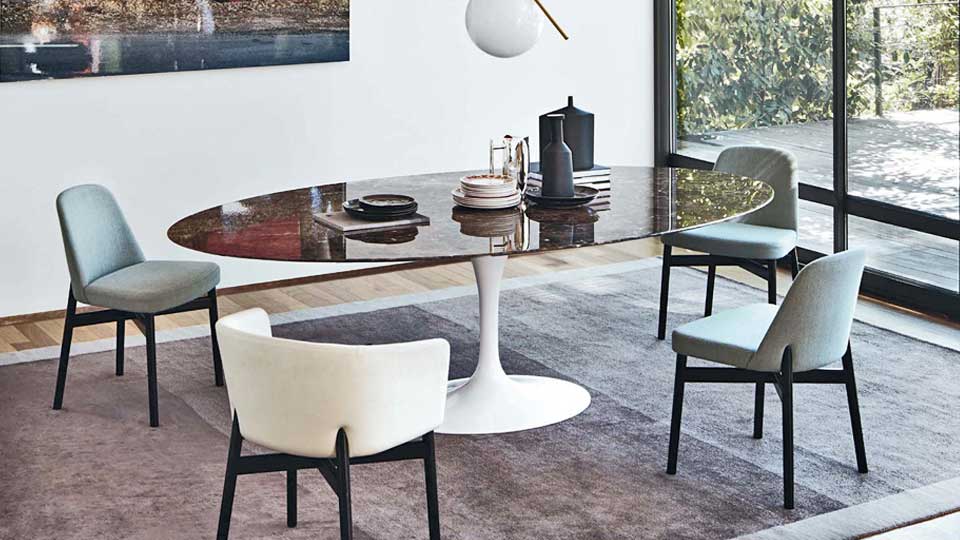
Much like Warren Platner before him, Eero Saarinen’s next Knoll collaboration would seek to make the chair one again by removing the chaotic “slum of legs” from modern dining furniture.
His iconic Tulip Series included within the Pedestal Collection is without a doubt one of the most recognizable examples of contemporary furniture. They are the first examples of single legged furniture, comprising a set of pedestal swivel chairs and modern dining and side tables.
Their organic forms are at once alien and earthly as if a smoothly painted aluminium flower had grown out of the earth. Initially available in an all-white finish, Saarinen tempered the collections’ purity with a bright red cushion, in an ironic attempt to draw attention away from their breath-taking bass.
His five-year investigation was a great technical challenge, one that expanded the limits of contemporary design and established the need for new technologies to deliver the Tulip from a single material as initially conceived by Saarinen.
The Next Generation
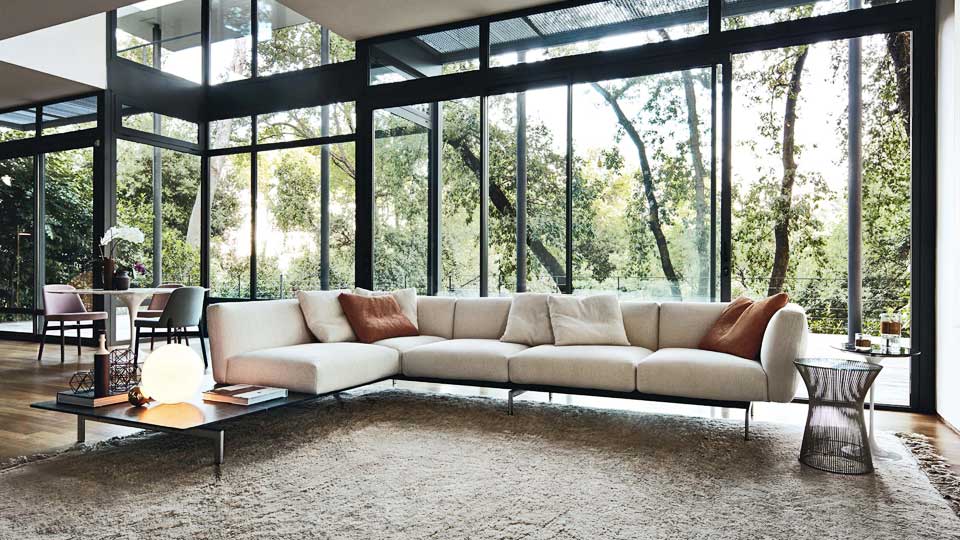
The staying power of Knoll’s furniture has as much to do with creative genius as it does a refusal to be shackled to any one moment in time. Fusing all available artistic resources, they created a collection of contemporary furniture that was pure, light and, as their slogan suggests, modern always.
This ethos continues today, with new additions and collaborations continuing to set global high bars for design excellence. Pierro Lissoni’s Grasshopper Dining Table and Avio Sofa System are a particular delight. The latter is now considered the essential modern sofa while the Grasshopper harnesses a never-seen-before marble struck through with deep reds and purples. At the same time, the Osergby’s stunning Pilot Armchair reworks a traditional template with bold new energy.
These latest collaborations express the perfect balance between modernity and tradition, reaffirming the creative vision that has made Knoll a design powerhouse. Each icons in their own right, it’s worth investing in the new collection – if the outlandish appreciation of Knolls mid-century modern pieces are anything to go buy – you really never know what you could be on to.
Shop the collection online or pop down to the Chaplins showroom to see all of these modern classics up close.
